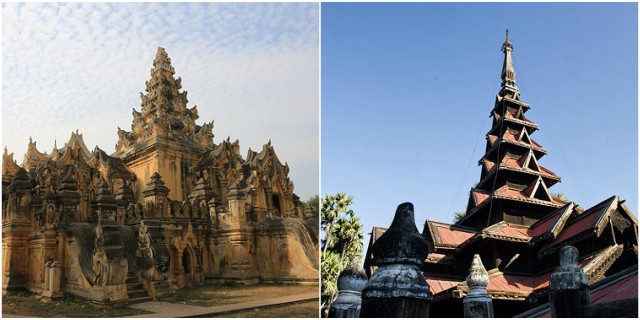Inwa, known to Westerners as Ava, was a powerful capital of Burmese kings from the 14th century to the early 19th century, located just 20 km (12.4 miles) south of Mandalay and across the Myitnge River. It was originally founded in 1365.
What makes this city interesting is the fact that it was built on an artificial island, made in the 1300s by connecting the Irrawaddy and Myitnge Rivers with a canal. The city was once surrounded by a huge wall.
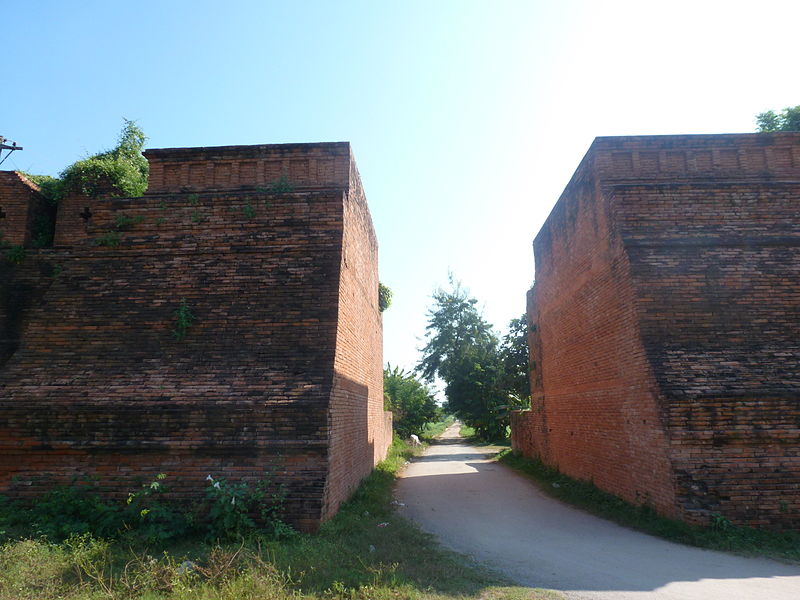
The city was built to be the capital of a newly unified kingdom that came to be known, as the Kingdom of Ava. It was the capital of the kingdom for 190 years until the year of 1555 when the Kingdom of Ava fell.
Inwa was again the capital of Burma from 1599 until 1613; it became the capital again from 1635 until 1752, and then again from 1765 to 1783. Then for the last time, it was the capital of Burma from 1821 to 1842.
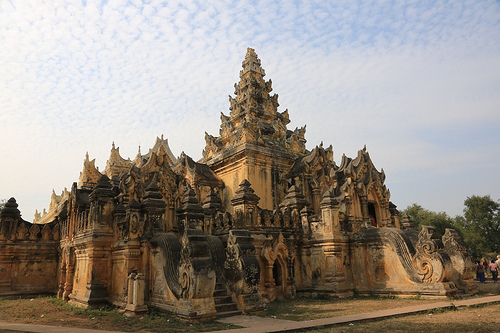
On March 22, 1839, a series of devastating earthquakes struck and it affected the entire region, but Inwa was hit very hard and was destroyed.
The city wasn’t rebuilt again as it was in the past, and on February 10, 1842, the capital was moved to Amarapura. After this, Inwa was finally abandoned.
The picture above displays the Maha Aung Mye Bon San Monastery, which is a fine example of Burmese monastery architecture during the Konbaung dynasty. The monastery, also known as the Brick Monastery is a well-preserved building in ochre color. The very ornate structure is decorated with intricate stuccoed sculptures.
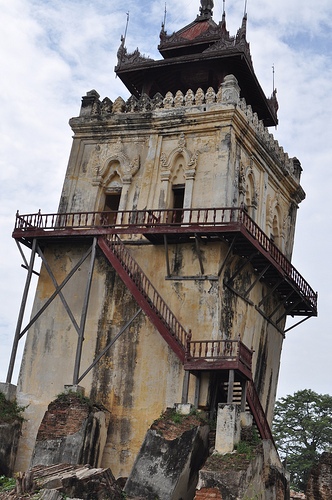
The Watch Tower, about 90ft (30m) high, is the only masonry building left on the King Bagyidaw’s Palace built in 1822. The tower was left leaning to one side after an earthquake in 1838 but it was restored as its original structure. This is one of the Myanmar architectural styles of the early 19th Century.
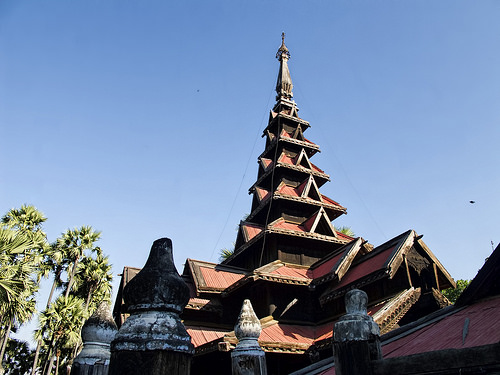
The old Bagaya Monastery built in the 1770s is made completely of teak wood. It was used during the peak years to educate the royals and is still in use as a monastery and school today.
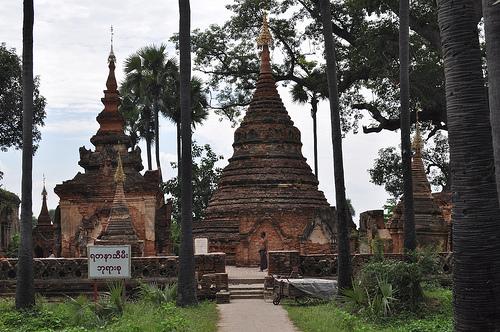
Not all structures in Inwa are in good condition. Because of the earthquake, most of the palaces in Inwa were destroyed but the now abandoned town is one of the main tourist attractions in Myanmar.
